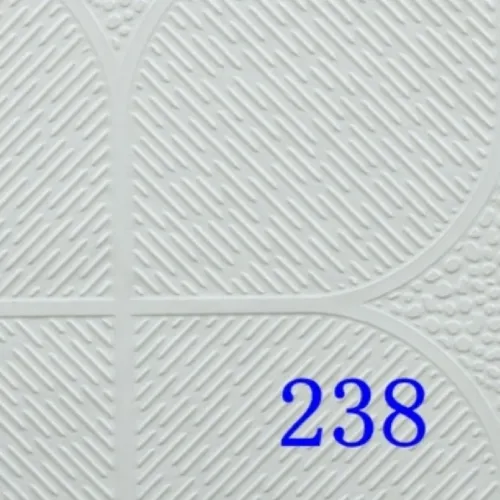Dec . 11, 2024 09:55 Back to list
Understanding Mineral Fiber Ceiling Tiles and Their Benefits for Interior Spaces
What is Mineral Fiber Ceiling Tile?
Mineral fiber ceiling tiles are widely recognized in the construction and interior design industries for their versatility, sound absorption properties, and ease of installation. These tiles are crafted from a blend of natural and synthetic materials, primarily including mineral fibers such as fiberglass, cellulose, and other inorganic substances. This unique composition not only makes them durable but also enhances their functionality in various settings, particularly in commercial buildings and residential spaces.
Composition and Manufacturing Process
The production of mineral fiber ceiling tiles begins with the processing of raw materials. The fibers are typically sourced from natural minerals, such as gypsum, or created through the spinning of synthetic fibers like fiberglass. These materials are then combined with additives to enhance specific properties, such as fire resistance, moisture control, and thermal insulation. Once the mixture is prepared, it is formed into sheets and subjected to heat and pressure to create rigid tiles.
After cooling, the tiles undergo cutting and finishing processes, which may involve coating for additional protection and aesthetic appeal. The end products can vary in texture, color, and size, providing a wide array of design options to suit different environments.
Benefits of Mineral Fiber Ceiling Tiles
One of the primary advantages of mineral fiber ceiling tiles is their excellent sound absorption capabilities. They are designed to reduce noise levels in a room, making them an ideal choice for environments such as offices, schools, and hospitals, where acoustics play a crucial role in comfort and productivity. By minimizing sound reverberation, these tiles enable clearer communication and a more serene atmosphere.
what is mineral fiber ceiling tile

In addition to sound insulation, mineral fiber ceiling tiles offer significant thermal insulation properties. They help to regulate indoor temperatures, working to lower energy costs by improving a building's energy efficiency. This energy-saving feature is particularly valuable in commercial settings, where heating and cooling costs can quickly add up.
Another notable benefit is their fire-resistance. Mineral fiber is inherently non-combustible, which means that these ceiling tiles can help improve a building's fire safety. They are often tested to meet stringent fire safety standards, making them suitable for use in public spaces where maintaining safety is paramount.
Installation and Maintenance
Installing mineral fiber ceiling tiles is a straightforward process, making them a popular choice for both new constructions and renovations. The tiles can be easily suspended from a grid system, allowing for flexibility in design and the integration of additional features such as lighting and ventilation systems. This ease of installation can significantly reduce labor costs and downtime during construction.
In terms of maintenance, mineral fiber ceiling tiles are relatively low-maintenance. They can be cleaned with a damp cloth, and any damaged tiles can be conveniently replaced without the need to disrupt the entire ceiling system. However, it is essential to monitor for moisture damage, as prolonged exposure to water can lead to staining or deteriorating of the material.
Conclusion
Mineral fiber ceiling tiles have emerged as a popular choice in modern architecture due to their combination of functionality, aesthetic versatility, and economic efficiency. Their sound absorption, thermal insulation, fire resistance, and straightforward installation process make them suitable for a wide range of applications, from commercial to residential projects. As property owners continue to prioritize safety, comfort, and energy efficiency, the demand for mineral fiber ceiling tiles is likely to remain strong in the coming years. Whether renovating an existing space or constructing a new building, considering mineral fiber ceiling tiles can be a wise choice that enhances both the atmosphere and performance of a space.
-
Durable Ceiling T Grid Systems | Easy InstallationNewsAug.29,2025
-
PVC Gypsum Ceiling: Durable, Laminated Tiles for Modern SpacesNewsAug.28,2025
-
Pvc Gypsum Ceiling Is DurableNewsAug.21,2025
-
Mineral Fiber Board Is DurableNewsAug.21,2025
-
Ceiling Tile Clip Reusable DesignNewsAug.21,2025
-
Ceiling T Grid Modular DesignNewsAug.21,2025







